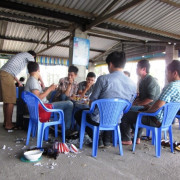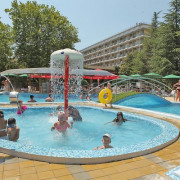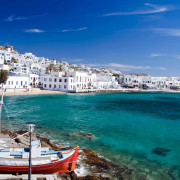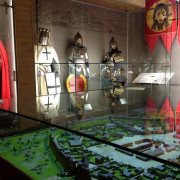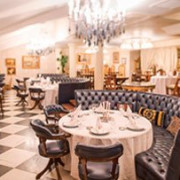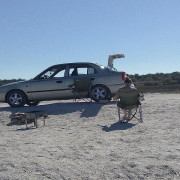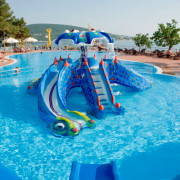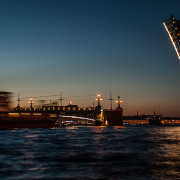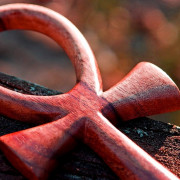Музейный остров в берлине
Содержание:
History of Museum Island
The Altes Museum (Old Museum) is located at Lustgarten, directly opposite the Berlin Cathedral and the new Humboldt Forum. With its opening in 1830, historically significant collections and artworks were made accessible to the general public in Berlin for the first time. The idea of a museum open to everyone goes back to the Enlightenment and its educational ideals. Karl Friedrich Schinkel, Prussia’s most important architect, provided the designs. Over the next 100 years, a total of five museums were built on the site. And at the end of the 1870s, Berlin’s Museum Island received its current name.
By 1855, a second impressive museum building was erected according to the plans of Friedrich August Stüler: the Royal Prussian Museum, today’s Neues Museum (New Museum). In 1876, the Alte Nationalgalerie (Old National Gallery), with architecture reminiscent of a Greek temple and incorporating Stüler’s designs, opened its doors. It took until the beginning of the 20th century to complete the ensemble. In 1904, the neo-baroque Kaiser Friedrich Museum at the tip of the Museum Island, today’s Bode Museum, opened. And in 1930, the Pergamon Museum was added as the last of the five large museum buildings.
The Nazis planned a gigantic conversion, which fortunately could not be implemented. After the war, Museum Island was a landscape of ruins, the Neues Museum in particular was almost completely destroyed. Reconstruction began during GDR times, but the Neues Museum still remained a ruin.
Museum Island’s master plan
In 1999, 10 years after the fall of the Berlin Wall, the Board of Trustees decided on a comprehensive restoration of the ensemble, entitled Museum Island’s master plan. This included the reconstruction of the Neues Museum and the restoration of the other museums. In addition, the individual museum buildings, each of which faces a different direction, were to be connected to form one large, unified whole.
A modern central entrance and exhibition building, the James Simon Gallery, has been welcoming guests since July 2019.
The British star architect David Chipperfield accepted the commission for planning the James Simon Gallery. His firm David Chipperfield Architects had already overseen the reconstruction of the Neues Museum. James Simon (1851-1932), a Jewish citizen in Berlin and a passionate art collector, now receives special recognition for the first time: he was the most important patron of Museum Island, who provided Berlin’s museums with extensive collections. His most famous transfer of ownership to Museum Island is under the northern dome in the Neues Museum: the bust of Nefertiti.
The Archaeological Promenade will connect four of the five museums and exhibit important objects from the art collections.
Цены в Немецком музее в Мюнхене
Прайс на разовое посещение Немецкого музея:
- Взрослый билет — 14 евро;
- Детям 6–15 лет, студентам, стажерам — 4,50 евро;
- Детям 5 лет и младше — бесплатно;
- Пожилым людям (от 65 лет), инвалидам, участникам волонтерских программ — 8 евро;
- Взрослым в составе групп от 20 человек — 8 евро с каждого экскурсанта;
- Семейный билет (для 2 взрослых и их ребенка не старше 17 лет) — 29 евро;
- Комбинированный билет (Немецкий музей+Музей игрушек+Музей авиации) — 21 евро.
Годовой абонемент на посещение музея и его филиалов без ограничений обойдется в 72 евро. Посещение планетария — 3 евро. Посещение мастерских и интерактивных программ — 5 евро. Посещение лаборатории ДНК с получасовым практическим занятием «Твое ДНК — изолируй его и забери домой!» — 5 евро, только по субботам в 15:00.
Елена
Оплатить билеты кредитной картой в билетных кассах музея можно только в том случае, когда стоимость билетов выше 20 евро (правило действительно для держателей банковских карт платежных систем MasterCard и Visa). Владельцы карт EC Maestro могут оплачивать билеты любой стоимости, без ограничений.
Приобрести билеты заранее можно на официальном сайте Немецкого музея. После покупки билет будет отправлен на указанный электронный адрес. Вы можете распечатать его или предъявить на входе электронную версию на экране смартфона. Купленный билет не подлежит возврату и обмену. При покупке обязательно нужно выбрать дату посещения, исключение — комбинированный билет, действительный 12 месяцев.
Экспонаты и выставки музея
Главное здание расположено на Музейном острове (Музеумсинзель), оно содержит примерно четверть всего музейного фонда. Здесь же расположены библиотека и помещения хозяйственного назначения. Самые ценные экспонаты представляют собой выдающиеся открытия мировых ученых и инженеров: вычислительная машина Z3 Конрада Цузе, первый моторный самолет братьев Райт, автомобиль Карла Бенца и другие великие изобретения.
Виртуальный тур: начало экскурсии от Google Maps
Стоит также выделить время для посещения планетария Немецкого музея. Помещение было отремонтировано и переоснащено в соответствии с современными трендами в 2015 году. Планетарий принимает посетителей в 12:00 и 14:00, а выходные еще и 16:00. Здесь же работают две обсерватории. Вход в планетарий оплачивается дополнительно и стоит — 3 евро. Дети до 6 лет в планетарий не допускаются.
Помимо постоянных экспозиций, в Немецком музее регулярно проходят научные и просветительские лекции, временные выставки. Узнать расписание ближайших мероприятий можно на две ближайшие недели в специальном календаре на этой странице официального сайта Немецкого музея.
На последнем этаже Немецкого музея (главное здание) работает смотровая площадка.
Елена
Как добраться до Немецкого музея в Мюнхене самостоятельно
Немецкий музей находится в одном из самых популярных туристических мест столицы Баварии — на музейном острове. В пешей доступности от Немецкого музея и острова находятся: Мариенплатц, Старая ратуша, Этнографический музей, Мюнхенская резиденция. Путь пешком из исторического центра города займет не более 15–20 минут.
Карта-схема пешего маршрута от Мариенплатц до Немецкого музея в Мюнхене на картах Google. Maps
Ближайшая к Музейному острову остановка общественного транспорта — Boschbrücke. Доехать до нее можно на городском автобусе № 132, а затем останется только перейти на остров по живописному мостику.
Добираться удобно и на трамваях: остановка Deutsches Museum есть на линии 16.
Вариант поездки на метро тоже возможен: от станции Fraunhoferstraße (линии U1 и U2) пешком придется пройти около 1,3 км.
Карта-схема метро Мюнхена
Здание Немецкого музея: панорамный вид на фасад на картах Google. Maps
Такси в Мюнхене стоит недешево. Сделать поездку более бюджетной можно с помощью приложений такси. В Мюнхене доступен вызов автомобиля с частным водителем через всемирно известное приложение Uber.
Видео о Немецком музее в Мюнхене
One island and five museums
The Pergamon Museum
The three-winged Pergamon Museum by Alfred Messel is the most visited museum in Berlin. It displays the Collection of Classical Antiquities, the Museum of the Ancient Near East and the Museum of Islamic Art. The Collection of Classical Antiquities is one of the most important collections of Greek and Roman art in the world. The most famous work is the Roman Pergamon Altar, whose sculpted frieze depicts the battle between gods and giants. As part of the master plan for Museum Island, the Pergamon Museum is being gradually renovated and a fourth wing will be added. In the course of this renovation, the hall with the Pergamon Altar is expected to be closed until 2025. A further highlight of Roman architecture, the approximately 17-metre-high Market Gate of Miletus, can still be viewed. Also on display are the highlights of the Museum of the Ancient Near East, the Babylonian Ishtar Gate with the Processional Way, and the artefacts of the Museum of Islamic Art.
The Bode Museum
Restoration of the Bode Museum at the tip of Museum Island was completed back in 2005. In its magnificent halls it houses a unique collection of sculptures, showcasing exhibits from the Middle Ages to the 19th century, including works from Donatello, Bernini and Canova. Other treasures are housed in the Museum of Byzantine Art and the Numismatic Collection. Together with works of European sculpture, works from Berlin’s Gemäldegalerie (Picture Gallery) are also on display. Since July 2019, visitors can once again visit the James Simon Cabinet in its original room, which was closed as a result of anti-Semitism under the Nazi dictatorship.
In summer, the riverbank opposite is a popular meeting place for Berliners and their visitors because of the beautiful view of the northern tip of Museum Island.
The Neues Museum
The reconstruction and renovation of the Neues Museum by the renowned architect David Chipperfield took a total of ten years. A sensitive approach to the old building and the traces of war, combined with ultra-modern conversions, resulted in an exciting, unusual architectural style that has not lost its authentic character. Since the spectacular reopening in 2009, the building has housed selected exhibits from the Egyptian Museum and Papyrus Collection, the Museum of Prehistory and Early History and the Collection of Classical Antiquities. The world-famous bust of Nefertiti is presented in a special octagonal room under the northern dome.
The Alte Nationalgalerie
Like an ancient temple, the Alte Nationalgalerie (Old National Gallery) rises above Museum Island on its high stepped pedestal. It is clear that Greek temples served as a model for the architect, Friedrich August Stüler. The Alte Nationalgalerie houses paintings and sculptures from Classicism, Romanticism, Biedermeier, Impressionism and the early Modern Age. It is considered to be one of the most comprehensive collections of art from the period between the French Revolution and the First World War. World-famous works such as The Monk by the Sea by Caspar David Friedrich and The Thinker by Auguste Rodin can be found here, as well as works by Schinkel, Menzel, Manet, Monet and Renoir among many others. Right at the entrance, visitors are welcomed by the most beautiful couple in Prussia: the famous Princesses Group by Johann Gottfried Schadow.
The Altes Museum
The classical building, the Altes Museum, designed by Karl Friedrich Schinkel in 1830 was the first museum building on the island. And for the first time, the royal art collections were shown to the public in a specially designed antique-style building. Today, countless masterpieces of classical antiquity are exhibited alongside the magnificent architecture with its expansive circular dome: Sculpture, jewellery, vases and coins from Greek and Etruscan art, as well as from the Roman Empire. Gold and silver jewellery is displayed under a blue ceiling in a special treasure chamber.
Museum Island is easily accessible by all forms of public transport in Berlin. You can take the underground using the U5, U6, or S-Bahn lines S1, S2, S25, S5, S7 or S75. The S-Bahn stop of Hackescher Markt is just 15 minutes walk away from the Island. The M1 and M12 trams stop at nearby Kupfergraben, less than 5 minutes walk away. The Lustgarten bus stop is 600m away from Pergamonmuseum and can be reached on buses 100 and 200. You can use the
to explore all the museums on Museum Island over three consecutive days. With a
you can visit 30 other museums in Berlin for free. Entry for children and young people up to the age of 18 is generally free.
-
Share on Facebook
Share on Facebook -
Share on Twitter
Share on Twitter -
Share by email
Share by email -
Print page
Print page
